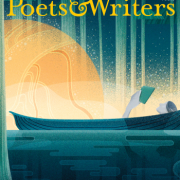Interviewing Questions for Blog Posts

Interviews are a vital aspect of nonfiction writing, Don Vaughn explains in Writer’s Digest. and freelancers often turn to subject matter experts or to everyday people with unique experiences, perspective, or opinions. Vaughn suggests five key questions be posed to interviewees:
- What was your inspiration for…..?
- Why is your accomplishment important?
- What were the greatest challenges you faced?
- What do you get personally from your work?
- Who else would you suggest I talk to?
In a sense, blog posts might be viewed as “reverse” or “flip-flopped” interviews, with prospects interviewing the business, rather than the other way around. At Say It For You, we teach content writers that searchers are recruiting help, evaluating the content in light of their own needs. But, as a blog-content-writer-for-hire by business owners and professional practitioners, I’ve found that actually interviewing the founders or principals of a business or practice can make for very effective marketing content, often more compelling than the typical narrative text. How does that work? In a face-to-face (or online) interview with a business owner, executive, or professional practitioner, I capture their ideas and some of their words. I then add “framing” to the post with my own questions and introductions.
Interviewing subject experts will give your content depth, credibility, and perspective, explains Dawn Wolfe of thesimonsgroup.com. For one thing, industry experts are in a better position to make a topic meaningful for non-insiders. As a side benefit, Wolfe suggest, the experts you interview are more likely to share the content with their own networks, increasing your reach. In fact, Wolfe recommends providing interviewees with “teaser copy” they can post to their own social channels, making sure to include relevant hashtags. Wolfe has practical suggestions for locating subject matter experts to interview, suggesting analysts, authors, consultants, government agency and nonprofit personnel, universities and professional associations.
The STAR method of conducting a “behavioral” interview has become quite popular, The interviewee is asked to describe a Situation they were in, a Task they needed t accomplish, the Actions they took, and the Results. But, whatever format our Say It For You content writers select for an interview with a SME (subject matter expert), the goal is to elicit new insights into the subject matter. Whether it’s business-to-business blog writing or business to consumer blog writing, the blog content itself needs to contain opinion and insight, not only information and products.





Follow us online!